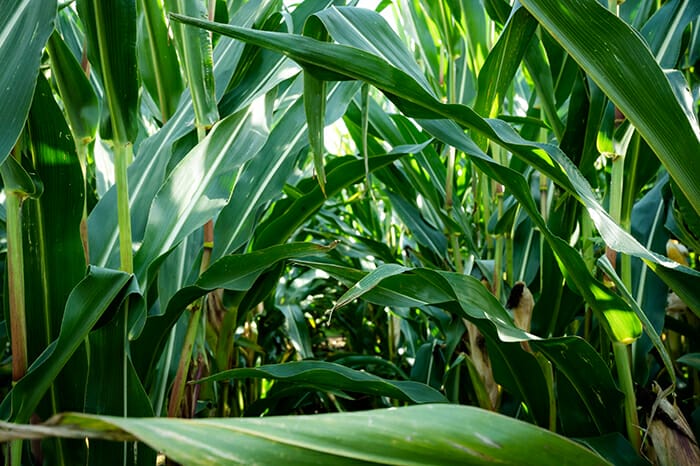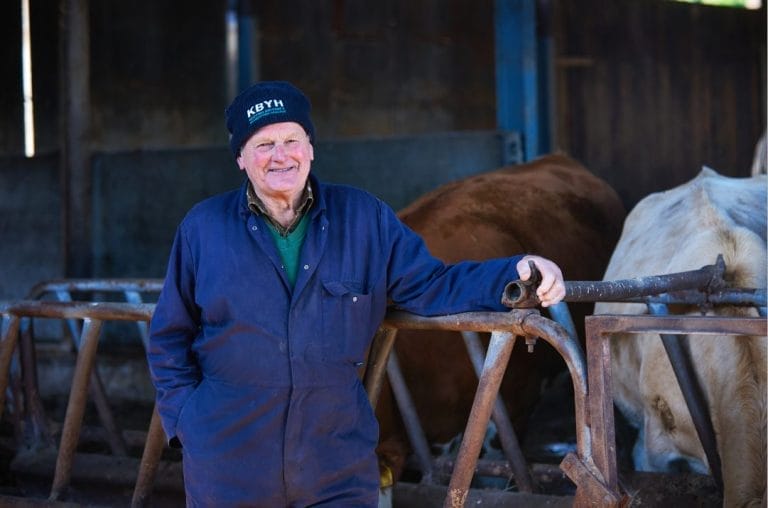
Increasing the amount of maize grown could be one tactic to help mitigate some of the price pressures facing dairy farmers and get the best return from fertiliser on grass.
While there are some encouraging signs about positive movements in milk prices, global factors are continuing to put pressure on prices of some of the most important inputs on dairy farms, including purchased feed, fertiliser and diesel. The challenge for dairy farmers is to limit the impact of price increases where possible, to help maintain margins by capitalising on milk price improvements.
“One area needing early planning is forage production for 2022,” comments Tim Richmond, LG Maize Product Manager. “The objective has to be to improve production and utilisation of quality grazing to support summer margins, while ensuring clamps are full of high-quality winter feed.
“Forage maize could play a significant role. Growing more maize would mean the crop provides a bigger proportion of winter feed requirements, which in turn allows more flexibility of grass use. If less total conserved forage is required from grass, then it would be possible to keep more grass in the grazing block throughout the grazing season, if the requirements for second and subsequent cuts are reduced.
“It could allow a focus on early season grazing and first cut, when grass provides the best response to fertiliser inputs, ensuring good yields from spring grass and a high quality first cut. This would potentially enable reduced stocking densities and lower nitrogen applications later in the season when response to nitrogen is more variable.”
He says maize has a lower nitrogen requirement per hectare than traditional mixed grass grazing and silage system. According to the MGA, the fertiliser cost for a typical three cut grass silage system in 2021 was £395/ha, compared to £228/ha for maize and £223/ha for grazing. Costs for 2022 will clearly be higher, but the relative position will remain.
“Putting more grass into grazing and increasing the proportion of maize will be one way to economise on fertiliser, without compromising winter forage production. Maize can also be a way to make excellent use of FYM and slurry.”
As there are fewer operations required to produce a hectare of maize, Mr Richmond suggests the crop can reduce the fuel costs per tonne of dry matter produced as well, helping mitigate rising diesel costs.
Finally, maize provides a consistent high-quality feed, and by selecting varieties combining high starch content and superior Cell Wall Digestibility, it will be possible to optimise rumen performance and hopefully reduce purchased feed use next winter.
Mr Richmond concedes there may be challenges in increasing maize hectarage but advises investigating the options. “Many farms are restricted as to how much maize they can grow due to factors like field suitability. One option this year to boost forage would be to take an early first cut before drilling maize. The experience of this year is that later drilled maize can perform very well and still be harvested in time to allow a successor crop to be established.
“Sowing Westerwolds, Italian Ryegrass or Humbolt forage rye will prevent soil run off and improve retention of nutrients in the soil, while building soil organic matter. Westerwolds and Italians are suitable for grazing or cutting while Humbolt forage rye can be grazed, zero-grazed or baled. All offer flexibility and will increase total forage output per hectare.
“If this approach is workable, it will be important to select earlier maturing varieties with shorter growing seasons to ensure a quality forage is produced in time for the successor crop to be drilled. Varieties like Gema, Prospect and Saxon would fit the bill, combining excellent energy content with fewer days to harvest and good early vigour so they will get away quickly.”
Where options on the home farm mean growing more maize is not practical, Mr Richmond points out that there is renewed interest among arable farmers to grow maize on contract as a break crop, particularly on farms looking to control problem weeds like blackgrass.
He says any arrangement needs careful planning and clear understanding because the objectives of the two parties will often be different. The dairy partner will be interested in the yield of quality forage, focussing on characteristics including dry matter yield, starch content and cell wall digestibility.
The arable grower will be more concerned with how the variety will suit the rotation and that it will be harvested in time to allow the autumn sown successor crop to be established.
“But both parties can benefit. The dairy farmer can increase the proportion of maize available without compromising the system at the home farm. They also have no responsibility for the growing of the crop and can benefit from the arable farmer’s expertise. They can budget the tonnage they should receive and be involved in key decision making, such as harvesting date.
“The grower has an additional cash crop and can use maize to improve the overall rotation.”
Mr Richmond explains that under a typical arrangement, a farmer contracts to grow a set acreage of maize. The grower covers the growing costs, while the buyer pays the costs of harvesting. The buyer will arrange the harvesting with the contractor in consultation with the grower. In some cases, the buyer may supply slurry to the grower, and this will be reflected in the price.
He says there are various models for paying for the crop with paying a price per hectare based on an assessment of yield a common approach. However, increasingly contracts are based on a set price per tonne at an agreed dry matter content. Whatever approach is adopted, he stresses it needs to be agreed at the onset.
“Clearly variety choice is crucial if all objectives are to be met. Both parties must be involved in the discussion on variety choice. It is perfectly possible to select a variety with early maturity and good yields to meet the grower’s objectives, at the same time having exceptional feed value to deliver the quality the dairy farmer needs.
“For arrangements requiring a very early variety, then Gema and Trooper would be an excellent choice as they both produce high quality, energy-dense forage, but are suited to a short growing season, allowing a successor crop of winter wheat to be established.
“For farmers looking to optimise milk production potential without risking a delayed harvest, then Prospect, Dignity, Saxon and Resolute are outstanding candidates.”
Mr Richmond believes that as a result of the current extreme economic pressures, it will pay to look at different ways to optimise forage productivity to exploit any positive movement in milk prices.
Watch our brand new video and see how choosing an LGAN accredited variety can help reduce your costs!


































